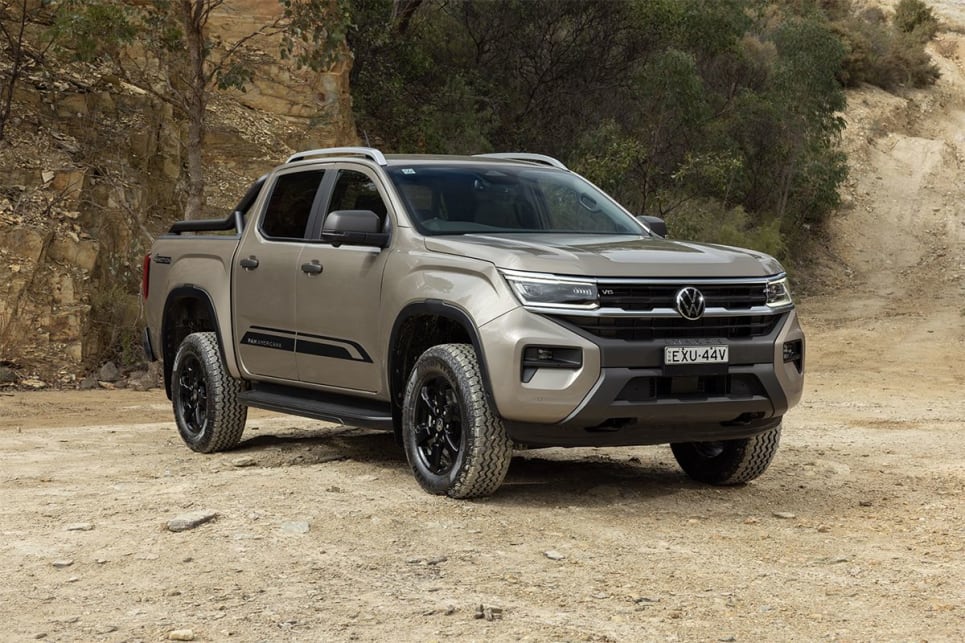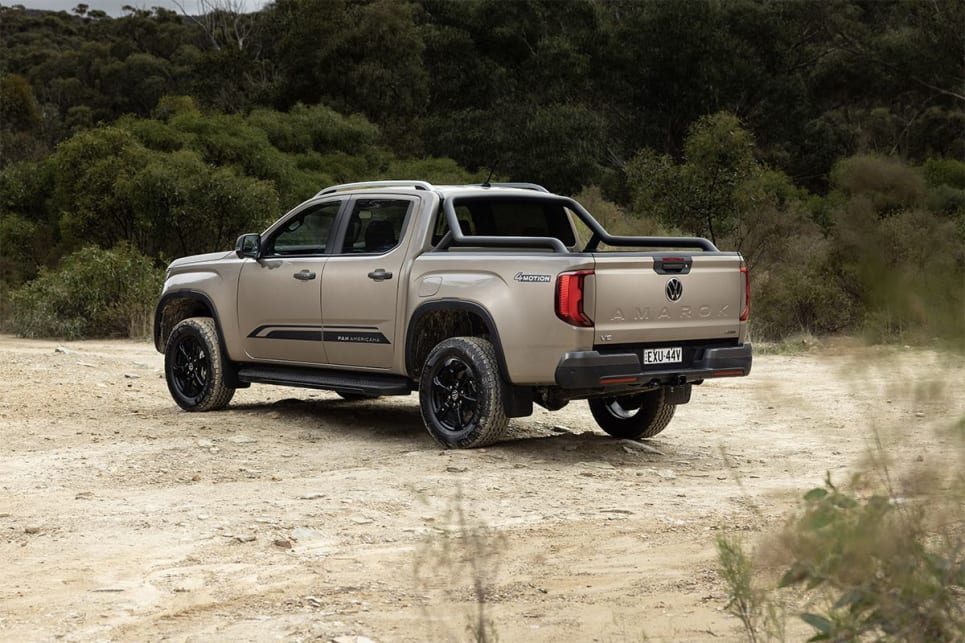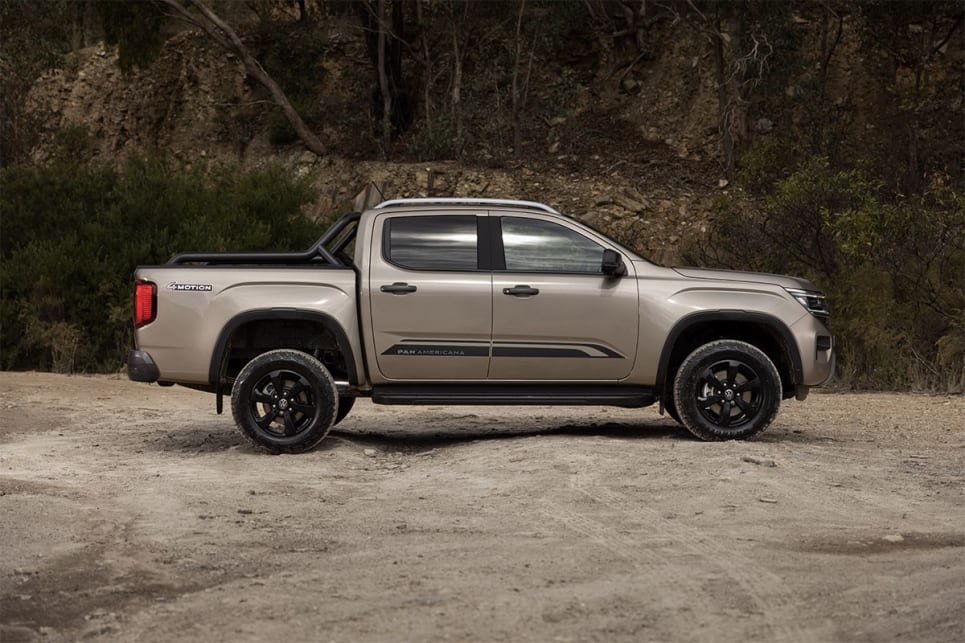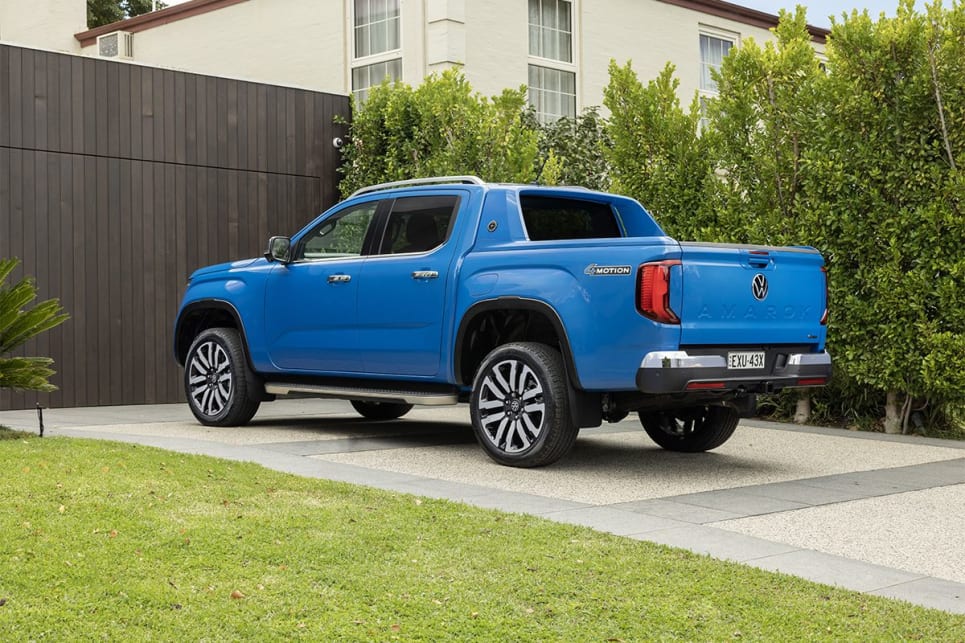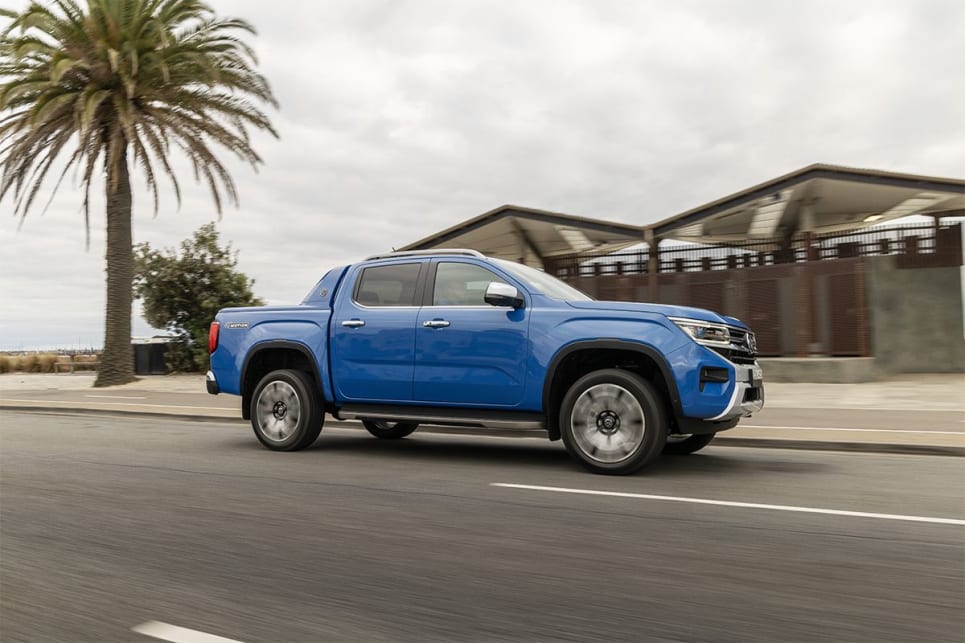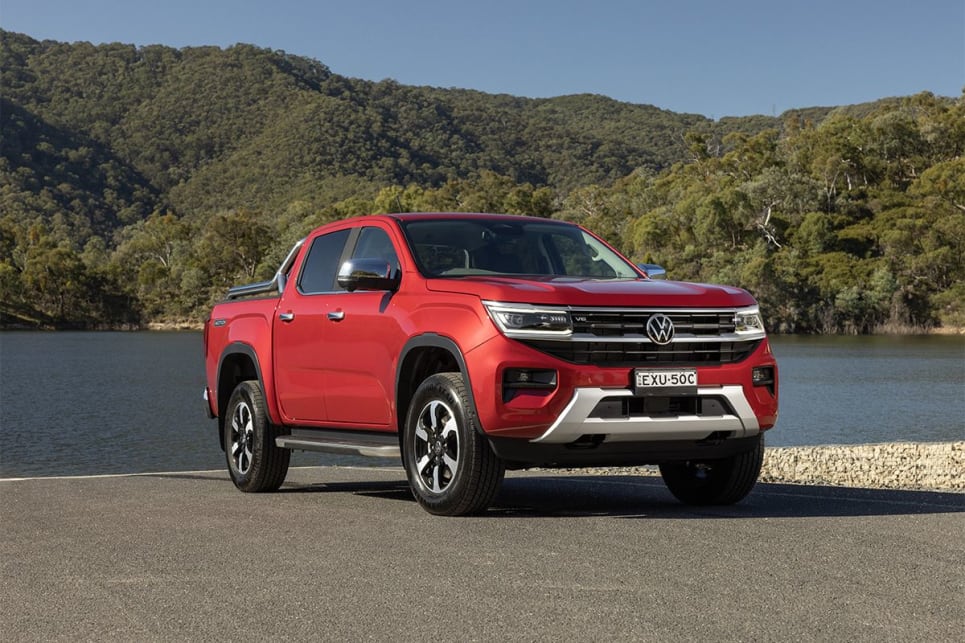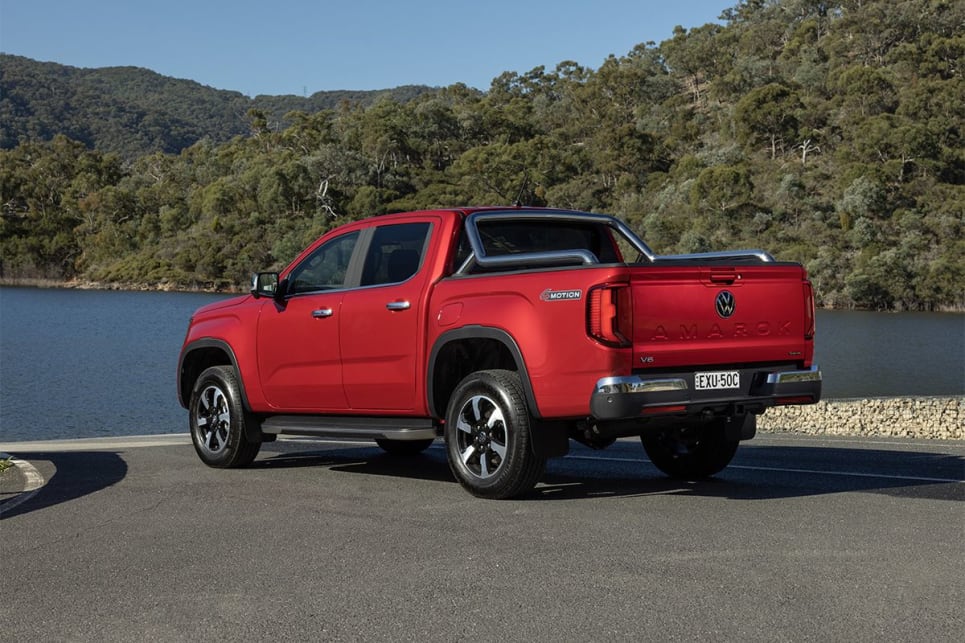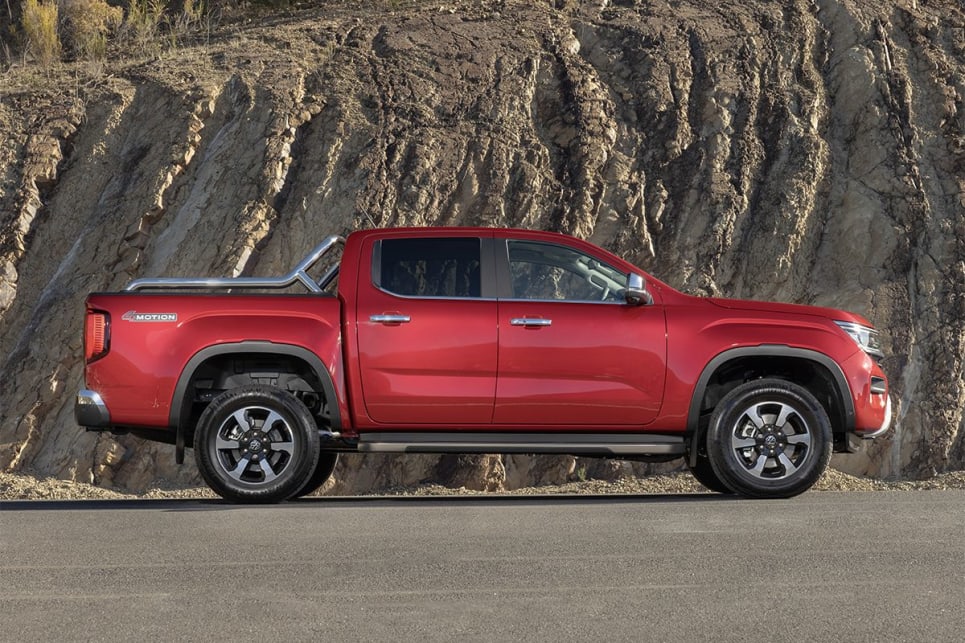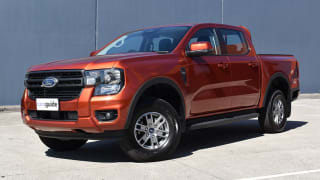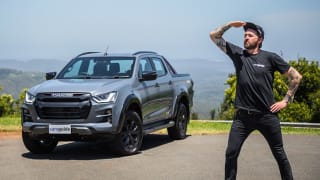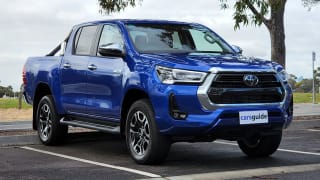VW has long been the aspirational people's car, and the Amarok is no exception amongst dual-cab utes. And aspiration usually comes at a premium that people are usually prepared to pay.
Predictably, prices have risen over the previous model, but then so have equipment levels.
Built at a Ford plant in South Africa instead of in Argentina or Germany, as per the previous generation version (or Thailand as per Ranger for Australia for that matter), today's least-expensive Amarok essentially starts from $52,990 (all prices are before on-road costs) for the Core 4x4 with six-speed auto, powered by a 2.0-litre four-cylinder turbo-diesel dubbed TDI405.
Yep, all models are four-wheel drive for now.
If you're quick, you can save $2000 and nab a manual version, but VW has already decided to drop that for Australia due to insufficient demand.
The Core might be the workhorse version with vinyl floors, but you receive a decent wedge of equipment, starting with some safety essentials that the old Amarok couldn't offer – including 20 fresh driver-assist systems that finally brings in Autonomous Emergency Braking, as well as nine airbags. These and other elements are outlined below in the Safety section.
Core also upstages base Ranger XL 4x4 dual cab auto equivalent (from $50,180) in eschewing halogens for LED headlights and (albeit handsome) steelies for alloys, as well as having DAB+ digital radio and a rear centre armrest with cupholders.
Additionally, the base VW includes adaptive cruise control (but without stop-and-go in Core), fabric-covered seats, single-zone air-conditioning, digitalised instrumentation, a 10.1-inch portrait touchscreen with voice-command (basically Ford's SYNC4 multimedia system), a reversing camera, front and rear parking sensors, wireless charging, wireless app connect for Apple CarPlay/Android Auto and Bluetooth connectivity.
There's also remote central locking, power windows, rain-sensing wipers, auto on/off headlights, side steps, a factory-fitted towbar, electric folding mirrors, tailgate with lift-assist (but not drop), roof rails, a 12V outlet in the tub and 17-inch alloys.
Next up is the Life, from $56,990, that switches from a single-turbo diesel to a more-powerful (BiTurbo) twin-turbo diesel with 10 instead of six speeds for the auto.
It also boasts fog lights, auto-lock tailgate, more body-coloured trim, carpet, extra seat adjustability, rear privacy glass, improved driver-assist safety, rear disc brakes instead of drums, an electronic park brake and auto shifter, adaptive cruise with stop-and-go, and more.
Meanwhile, the anticipated best-selling Amarok – the Style from $66,990 – adds 18-inch alloys, matrix LED headlights, keyless entry/start, upgraded instrumentation and audio, an insulated windscreen, dual-zone climate control with rear seat air vents, ambient lighting, a stitched leather-like dashboard cover, powered/heated front seats, a 12-inch touchscreen, a 360-degree area-view camera, a rear sports bar, cargo bed liner, alarm, park assist and more.

This is also the cheapest Amarok with the 3.0L V6 turbo-diesel option, costing another $4000 on top. Branded TDI600, this larger engine also drives the $75,990 PanAmericana.
The PanAmericana is the more rugged off-road-biased Amarok in the Ranger Wildtrak mould, ushering in unique front bumper treatments, upgraded leather, premium audio, darkened cabin highlights and other luxuries.
There's also a 'dynamic suspension package' from this grade up, with a monotube damper set-up for better body control at speed, in lieu of the twin-tube dampers fitted to lesser variants.

Uniquely in this size of pick-up, if diesel's not your thing, then try the range-topping Aventura petrol. Known as the TSI452 and kicking off from $79,990, it boasts a variation of the Ford Mustang EcoBoost's four-cylinder turbo engine as an alternative to the same-priced TDI600 V6 diesel version. Even Ford doesn't sell a Pony Car-powered ute!
Among other goodies, it adds 21-inch wheels (with those monotube dampers), even plusher leather, lashings of extra chrome and a moulded sail plane with powered tub cover.
For now, there are a few items the Amarok lacks that the Ranger includes – like the overhead auxiliary switchboard for future accessories, a side tub step for easier access, soft-open tailgate, surround-vehicle 'zone' lighting, outboard dash cupholders on upper grades, and 4WD-ing data from Wildtrak up.

Bad news for those with FOMO. But none are really deal-breakers, as the basic functionality of both utes is essentially the same.
So, what do we think? Compared to other rivals, the latest Amarok's generally more-expensive pricing and premium must be weighed against its Australian engineering (like Ranger), as well as on-brand design and presentation inside and out – something VW does very well.
If the latter is worth anything to you – as the most upmarket medium-sized truck you can currently buy in Australia – then VW's ute must represent strong value for money.



